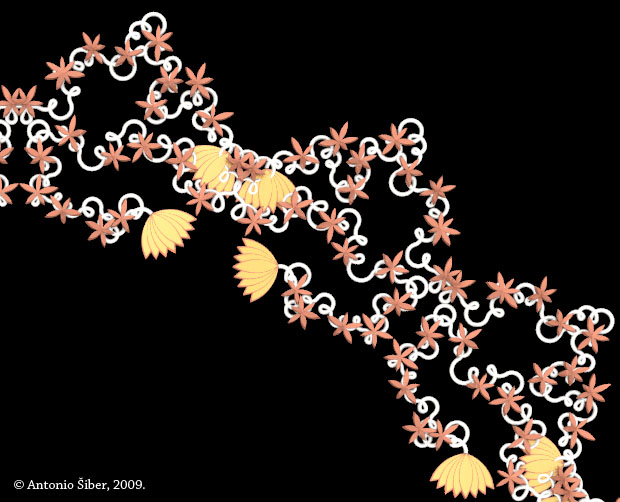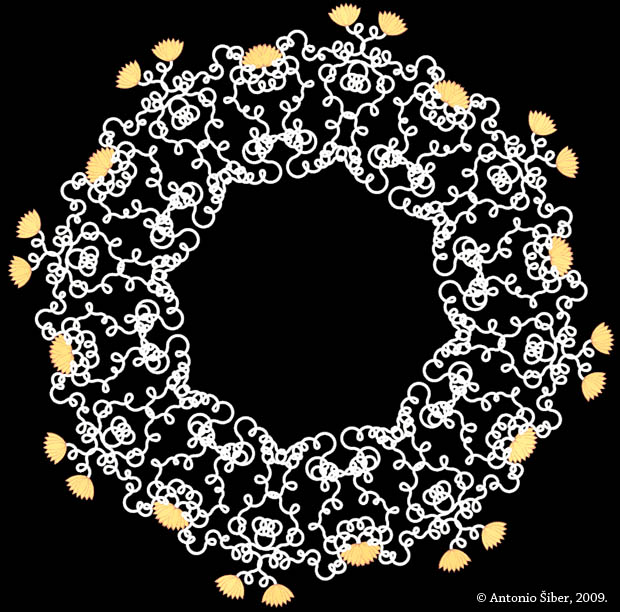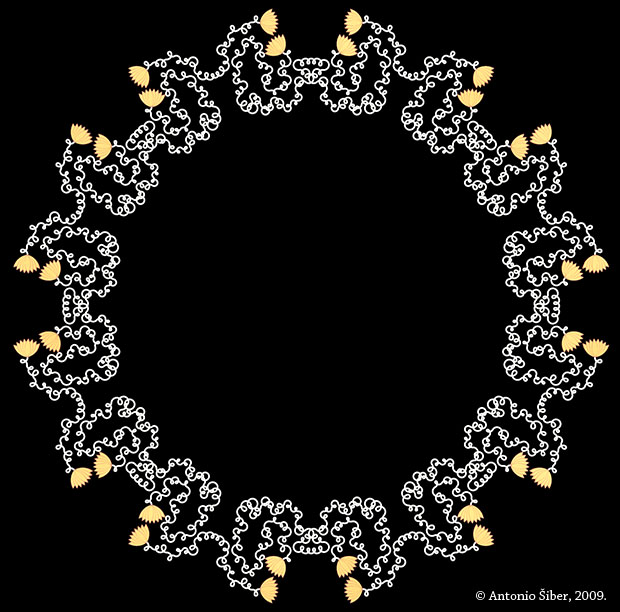Leonardo's knottiness (26th of October 2009)


One of less known, yet possibly among the most imaginative works of Leonardo da Vinci are his paintings in Salle Delle Asse in Sforza castle in Milan (see image below). Leonardo has very skillfully used the geometry of the hall so to achieve impression that the observer stands in the middle of some dense forest (this work of Leonardo could probably be categorized as Trompe-l'œil, that was quite common later, in the baroque era). But the pattern that Leonardo creates is a complex "knottiness" of leaves, branches and ropes that tie together in hundreds of different and very mathematical ways.

Of course, every amateur science historian will immediately state that Leonardo predicted a very active branch of mathematics/topology of our times, the knot theory (not quite true, since one can find similar patterns in much older books, e.g. Book of Kells - 800 AD). Anyhow, the pattern is really wonderful, so it inspired me to make something at least remotely similar. I made a kind of a stochastic covering of the surface using a function whose value and first derivative are everywhere continuous, and which is composed of pieces of circles (i.e. tori in 3D representation).

Tha algorithm includes a primitive version of detection of self-intersection (2D collision detection). I wasn't completely satisfied with the leaves that cover the metal (silver) lacy pattern of the stem, so I made several versions without (copper) leaves. Leonardo did similar thing by specially separating the rope by moving it "below" the forest roof.

The algorithm creates the pattern that smoothly repeats following symmetries of octagon. The octagon is a special story in context of Leonardo's works and he often used it in his sketches and plans, in particular for the plan of the "centralized temple" (more about that soon). The pattern can also be used as an ornament for ceiling, floor, or as a metallic "seaming", bordering the (octagonal) jewel on a ring perhaps.

The whole experiment is interesting to me in some wider context of "modular ornament", i.e. in the context of building the pattern by repeating a predefined, arranged, or given (elementary) motifs.

| << Drinking coffee by the seaside | Torn up sky >> |
Last updated on 23rd of November 2009.